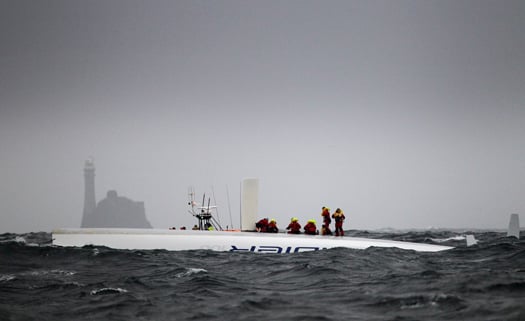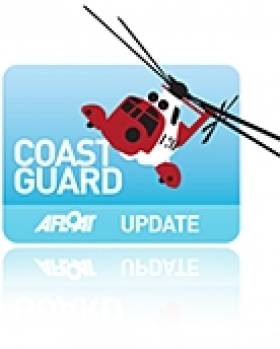Displaying items by tag: DSC
Donaghadee Sailing Club in Northern Ireland recently signed up to become an OnBoard club, as part of the RYA’s grassroots programme to get young people aged 8-18 into sailing and windsurfing.
With the club in the focus of RYA’s Spotlight series this month, Commodore Steve Dickson explains the motivations behind the move.
“Since the club participated in the pilot scheme of the Bright Nights Programme a number of years ago, it was an obvious step to make the jump, getting further resources into our hands to reintroduce our scheme post-Covid,” he says.
OnBoard at Donaghadee has brought about a “fun and informal” youth sailing training environment since last August as pandemic restrictions eased.
“We’ve ambitious plans to have another pre-Covid year again like 2019 with almost 100 new junior/family members, and our multiple Friday evening sailing sessions booked out,” Dickson says.
“We all long for those carefree balmy summers evenings again, the buzz around the club, our beautiful harbour and Donaghadee sound full of young people having fun on our fleet of Toppers and Picos.”
That’s not to mention “the safety boat crews teased by the BBQ in the courtyard wafting the smell of the fresh Jim Davenport burgers in their direction as the food and social evening gets going with the sailors and families from the first of three sessions”.
While first moves in 2021 were tentative, as the programme was only open to existing members and their families, Dickson says the club plans development training with its instructors to prepare them as things ramp up in 2022.
As what what's next for Donaghadee as an OnBoard centre? Dickson is excited for the future: “Opening back to our wonderful local community again in 2022, both for our Friday BNS sailing, school and youth groups, exploiting the resources and training opportunities available from the OnBoard scheme.”
While it might be an exaggeration to say that all of the 21 crew members of Rambler 100 owe their lives to the Irish Search and Rescue service, there are certainly five people whose future prospects were greatly improved by the operation off the Fastnet Rock on August 15th. A lot of media focus has been on Coxswain Kieran Cotter and the crew of Baltimore Lifeboat as well as lifeboat mechanic Jerry Smith, whose dive boat, on charter to the media team of one of the competitors, was on hand to search and recover the five drifting crew. There is no question that this focus is appropriate. RNLI crews all over the UK and Ireland deserve the attention, not only because of their extraordinary voluntary dedication to the cause, but also because such publicity helps swell the coffers of the charity. The service could not operate without the generosity of the donors and incidents such as these help fill the blue boat-shaped boxes held by even more RNLI volunteers.

Saved: Ireland's Rescue Services Answered the Call of the capsized Supermaxi Rambler 100 off the Fastnet Rock. Photo: Team Phaedo
The dramatic stories and pictures dominating the media show the front line of a quite wonderful resource that is Search and Rescue in Ireland today. Baltimore Lifeboat was at the coal face of an intricate network of operations, triggered by the crew's EPIRBs. Irish Coast Guard radio officers in Valentia responded almost immediately tasking the rescue resources, working the phones and computers to confirm that this was not an accidentally triggered EPIRB, contacting RORC HQ, determining search patterns and relaying the information to the scene. It was the backroom contacts between RORC and the Coast Guard in endeavouring to contact Rambler 100 using satellite phones that confirmed the possibility of a catastrophic incident involving the Supermaxi. The subsequent tasking of the Shannon and Waterford based Sikorsky helicopters led to the medevac of crew member Wendy Touton and timely treatment of her hypothermic condition, initially by the on-board paramedics and later at Tralee General hospital. And Coast Guard involvement didn't end with the successful rescue – the shoreside operation to provide food and shelter in Baltimore was coordinated by Coast Guard personnel and the salvage operation of the hull of Rambler 100 was overseen by the Irish Coast Guard.

Rambler crew are recovered from the water after a SAR operation by the Irish Coastguard Photo: Team Phaedo. More photos here.
That Ireland has probably one of the best Search and Rescue services in the world goes back to the campaign initiated in 1988 by Joan McGinley, following the death, within sight of land of Donegal fisherman John Oglesby, whose leg was severed in a trawl winch. Eamon Doherty, the late former Garda Commissioner chaired the review group established in response to the campaign and his report led to the establishment of the Irish Marine Emergency Service, subsequently the Irish Coast Guard. Under the guidance of Director Capt Liam Kirwan, the new service moved quickly to become not only the central co-ordinating body for Search and Rescue, but developed its own resources, notably the helicopters, previously tasked in from Irish Air Corps and UK SAR.
Another element that will feature in the Rambler 100 incident is the Marine Casualty Investigation Board (MCIB), set up from recommendations arising from a review of the handling of investigations into marine casualties.
It might be thought that the incident is now closed, but there are many unanswered questions and the investigation will be looking at these and making recommendations that should improve safety in this sector. These questions will include EPIRB performance, liferaft deployment and grab bag usage, but perhaps the key issue yet to be determined is why the response from fellow competitors didn't appear to happen. Even if Channel 16 wasn't being actively monitored, and if not why not, shouldn't the Mayday set off by the Coast Guard have set off the DSC alerts on the radios of Rambler 100's fellow competitors? Had the incident occurred several hours later or earlier when Rambler 100 could have been up to 100 miles from the nearest land, when conditions worsened, we could be looking at much more serious consequences.
It is heartening to think that, in this small country of ours in troubled times, not only do we have a shining star in our search, rescue, recovery and restore system, involving professionals and volunteers cooperating for the greater good, we also have a system that determines the nature of incidents so that we can all learn from the experience.
And let us not forget those people and services, such as the Gardai, Navy, Army and the community of Baltimore who are outside the media spotlight who contributed to this happy ending.
Afloat's Latest Coastguard News
Afloat's Latest RNLI Lifeboat News
Afloat's Latest MCIB News
DSC Radio Distress Alert from Ireland Triggers Major Search
At 7.50pm on Saturday, Holyhead Coastguard received a VHF DSC automated distress alert, with no position and a search was launched involving four lifeboats, three Coastguard Rescue Teams and Rescue Helicopter 122 from RAF Valley. The search area encompassed 706 square miles.
Holyhead Coastguard identified the MMSI for the radio unit to be from a derelict fishing vessel in the Republic of Ireland and Dublin Coastguard confirmed the vessel had been broken into at some point and the radio unit taken. Without the details of any new vessel and current owner of the radio unit, Holyhead Coastguard was unable to determine if the distress alert was genuine or a false alert without a search.
Holyhead Coastguard Watch Manager Andy Carroll said,
"Anyone buying a second hand VHF DSC radio must ensure the details are updated on the MMSI database and familiarise yourself with how to operate the unit and how a distress alert is made. This is vital for an effective search and rescue operation should you get into difficulty."
Andy went on to say,
"If you think you have inadvertently sent an automated distress alert, don't hesitate to get in contact with the Coastguard. We would much rather know that it is a false alarm than continue searching needlessly."
VHF DSC and MMSI – explanation of terms used:
Carrying a VHF radio on your vessel is vital and VHF DSC (Digital Selective Calling) is strongly recommended. Ensure your radio equipment is fully working and you know what to do in an emergency. With DSC you can send a distress alert along with your exact position, with one touch of the button. The distress alert is repeated every four minutes until it is acknowledged either by a Coastguard Station (Ship to Shore) or by a vessel (Ship to Ship) within radio range.
Ensure you have updated your MMSI details – this is especially important if you have just bought the boat with a radio already installed or you are installing a new DSC, radio set. Maritime Mobile Service Identity ( MMSI) numbers are programmed into a DSC radio set and an MMSI is issued as part of your radio licence application, via Ofcom. It consists of a series of nine digits, which are used to uniquely identify the radio on your vessel.































































